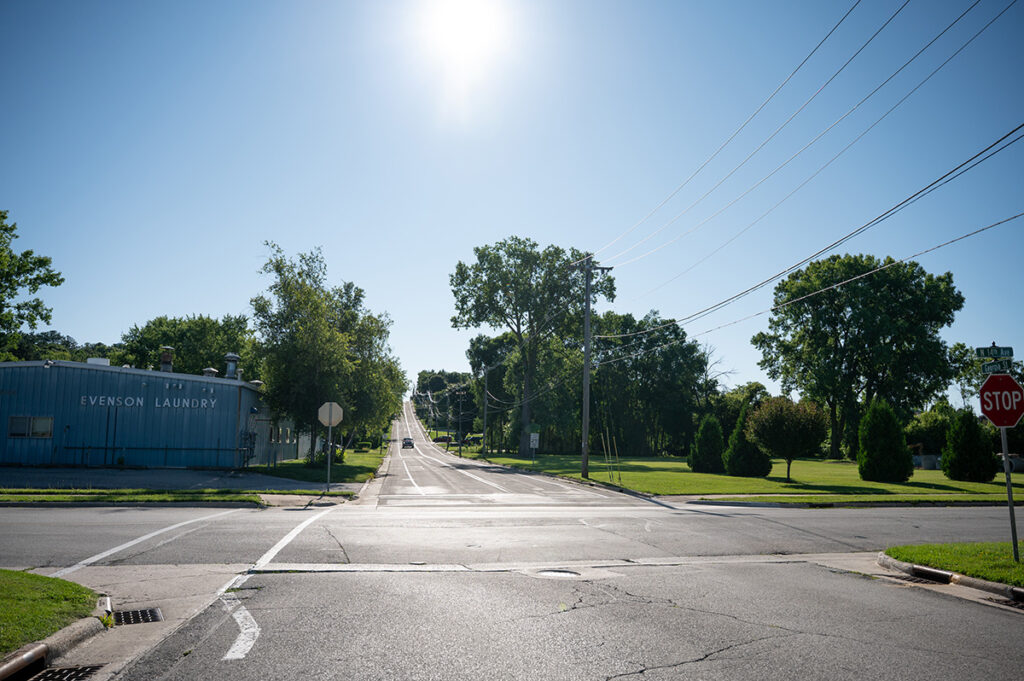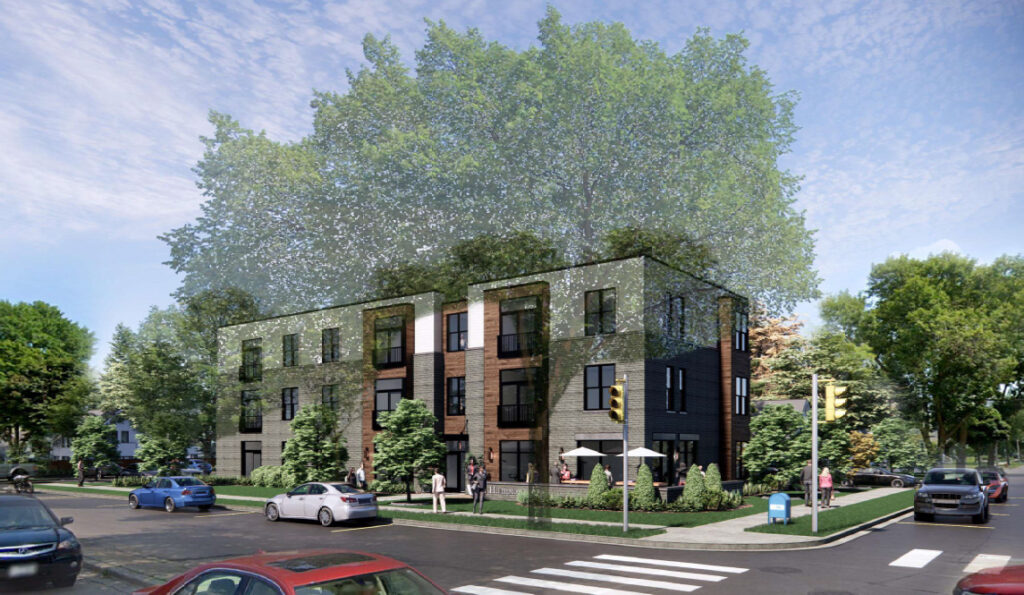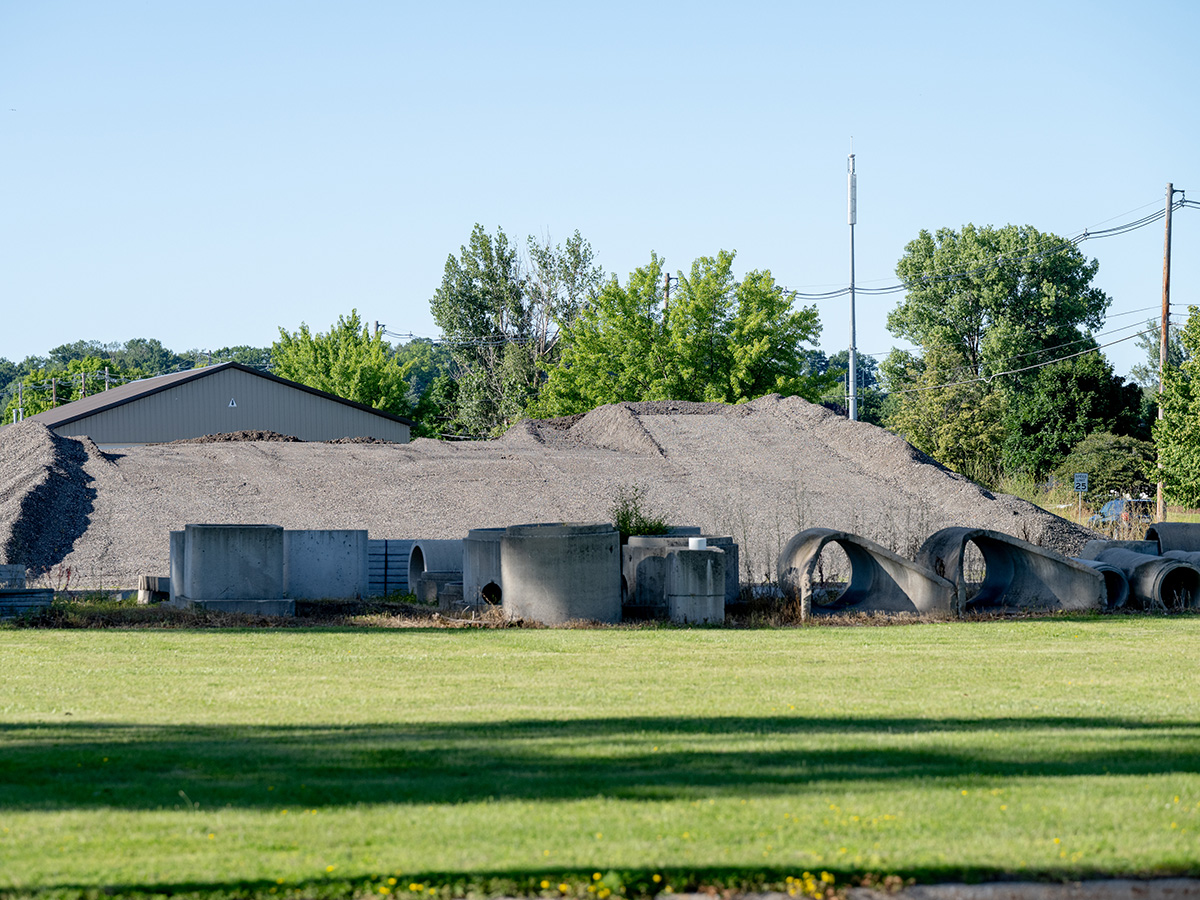Locked Out: Door County’s affordable housing shortage
Door County Knock is reporting an in-depth series on Door County’s affordable housing shortage, addressing questions such as why the county lacks affordable housing, how market trends have contributed to its decreased availability and what roadblocks exist to building more. Click here to read more.
If there are questions you’d like the answers to or people you’d recommend we talk with as part of our reporting, please email us at [email protected].
There are many factors involved in the current affordable housing shortage, including high material and labor costs. However, developers who want to build housing that is truly affordable, especially for low-income families, also face costly hurdles and red tape to get the assistance they need to make their investments worthwhile.
Building material costs have risen sharply since 2020 and there is a shortage of labor in the construction industry. This is true everywhere, but Door County, especially its communities at the northern end of the peninsula, has the added layer of geographical isolation.
Building materials have to be shipped from Sturgeon Bay and Green Bay, and mileage is charged accordingly, said Craig Coursin, owner of Carlson-Erickson Builders, based in Baileys Harbor. The recent closure of northern Door County’s only lumber yard will also affect builders and contractors in the area.
Affordable housing developments adhere to the U.S. Department of Housing and Urban Development’s definition, of affordable, which is that housing and utility costs cannot exceed 30 percent of a household’s income, and that income must be less than 80 percent of the Area Median Income.
Traditional developers and landlords would lose money if they charged what low and very low income households can afford in Door County, according to Brian Spoerl, a developer who is working on an affordable housing project in Door County. Affordable housing is not feasible without low-interest loans, Low Income Housing Tax Credits, grants and other forms of assistance, he said.
Assistance does not come cheap either, according to Spoerl. Up-front funds, developer commitment, public-private collaboration and knowledge are key to putting together the deals that make truly affordable housing a reality.
Door County’s AMI for a family of four is $103,700, which means a rent or mortgage payment cannot exceed $2,074 per month to be affordable for a household making 80 percent of the AMI. However, households that are low income (making 60 percent of the AMI) or very low income (making 30 percent or less of the AMI) need designated affordable housing the most, according to local housing experts.
There is some market rate and designated workforce housing available in Door County that would be affordable for households making 80 percent of the AMI, but there is virtually none that is affordable for low or very low income households, according to Stephanie Servia, planning and zoning administrator for the City of Sturgeon Bay.
A four-person household earning 60 percent of AMI can afford $1,555 per month for housing. The same household earning 30 percent of AMI can afford $777.75 per month.
There is no comprehensive report of how much housing is available in each price range for Door County, but Servia and staff keep a list of Sturgeon Bay rental properties and contact landlords monthly about vacancies, she said.
In May of this year, only 10 housing units were available out of the 1,200 units they were able to track.
Three of the units available in May were under $1,000 per month and considered affordable, and seven were for market-rate properties.
That means the City of Sturgeon Bay has less than 1 percent vacancy rate. A “healthy” rate is between five and seven percent, Servia said, and she said she doubted the vacancy rate gets any better in parts of Door County outside Sturgeon Bay. Vacancy rate is the number of unoccupied housing units compared to the total number of available housing units in an area.
There is no question Door County needs more affordable housing, even though some residents have expressed concern that “we’re overbuilding, or we’re building too many apartments,” Servia said. “Based on these numbers, we still need more … a healthy vacancy rate would indicate that we need to stop.”
Most of the rental units being built are market rate, even though the need for affordable housing is greater. That’s in part because it is more difficult for developers to make enough money on an affordable housing project to make it worthwhile, according to Mariah Goode. Goode was the county director of the Door County Land Use Services Department for two decades and she serves on several local housing organization boards.
Not only is the AMI lower in Door County than in places like Dane and Milwaukee counties, Goode said, but affordable housing developers need to meet specific criteria, adding expense and work hours to those projects.
“Our incomes are much lower (in Door County),” Goode said. “The rent (developers) can charge here is so much lower. Getting Low Income Tax Credit money is tied to 80 percent median income. They literally can’t make enough money. The biggest obstacles are almost insurmountable.”
The City of Sturgeon Bay has made a targeted effort in the last several years to tackle the obstacles to affordable housing from a development perspective, according to Kay Smith, lender for the Workforce Housing Lending Corporation in Door County.
Smith’s job is to work with developers and attract them to building in Door County. So far, developers are positive about how much effort local municipal governments are investing into their projects, she said.
The Avenue
Brian Spoerl owns Spoerl Commercial, a business he started in 2022. He has worked for 30 years in commercial development, including affordable housing. Spoerl has been working with the City of Sturgeon Bay since October 2023 to make his company’s affordable housing development a reality. Called The Avenue, the project was awarded $927,244 in Low Income Tax Credits from the Wisconsin Housing and Economic Development Authority this May.
Combined with incentives from the City of Sturgeon Bay and other financing, the development will soon begin phase one construction of two three-story buildings with a total of 39 units. Phase two will include one more building with 20 units. Units will be a mix between one, two and three bedrooms. Rents will be affordable for households earning 30 to 60 percent of the AMI.
The combination of financing options is “the only way it was feasible,” Spoerl said and described his work with the city as a “collaborative effort. A partnership. Not what you often see between communities and developers. It is often adversarial.”
The city council agreed to sell Spoerl city-owned land for $100, contingent upon receiving the WHEDA credits. Spoerl also purchased an adjacent parcel that is privately owned by Evenson Laundry. The city expanded Tax Incremental District #6 to include The Avenue and used TID financing through WHEDA to contribute about $1 million to the project, he said. and the city also rezoned the parcel to allow for multi-family, higher-density housing.

Affordable housing development is “tricky and nuanced,” Spoerl said, and almost impossible to do without municipal incentives. “It was the first time I’ve been in front of a board where they’ve thanked me for investing in the community,” he added.
The project hinged on receiving the tax credits from WHEDA and Spoerl is still working out bank financing and the final development deal with the city. The Avenue is one of three projects that have received LIHTC in Door County in the last decade. The Shoals in Sister Bay received them in 2021 and Bay Hill Apartments in Sturgeon Bay received some as well in 2018.
Including all three affordable housing projects, a total of $2,180,559 in LIHTC have been awarded in Door County since 2016.
Low Income Housing Tax Credits explained
The LIHTC program was created in 1986 by the federal government to facilitate more investment in and development of housing for low- to moderate-income households, seniors, and people with special needs. In Wisconsin, LIHTC is administered by WHEDA.
The tax credits offset income tax liability and a developer can use them in three different ways.
They can claim the credits on their own income tax, sell the credits to an investor in exchange for funds or equity to develop the housing, or sell the credits to a syndicate. Syndicates are groups of banks and other lenders who bundle credits from several developers and then sell those bundles to investors.
When a developer receives LIHTC, they have lower debt on the property and that allows the owner to charge less rent. They receive the credits for 10 years, so $900,000 in LIHTC amounts to $9 million over the credit term.
At least 20 percent of all units in a development must be reserved for households at or below 50 percent of the AMI, or at least 40 percent of them must be reserved for those at or below 60 percent of the AMI. Recipients must adhere to affordable rent limits for at least 30 years.
The award process is very competitive, Spoerl said, and has a detailed scoring process, with higher scores going to developers who are serving the lowest income households and commit to affordability for a longer period of time.
Costs and more costs
“To be candid, affordable housing costs (developers) more for a number of reasons,” Spoerl said.
Before a developer is even awarded LIHTC, there are up front costs, he said. “To win the tax credits you have to eliminate as many barriers as possible.”
Eliminating those barriers costs money. Paying unit development and a fully engineered site plan are just some of the initial costs a developer needs to plan for in order to compete for LIHTC, according to Spoerl. Extra work means extra costs as well, he added, and his company worked with Sturgeon Bay’s finance and community development departments, as well as the city council and mayor to get approval to sell city-owned land, get zoning approval, and extend the TID. All those things take work hours to achieve.
“It’s pure speculation that you may or may not win (tax credits),” Spoerl said, even doing all the right things.
Then when you do win, there are hidden costs that Spoerl said were surprising. Typical real estate development deals have fees and costs associated with them, but there are simply more of those costs when it is an affordable housing situation, he said.
Not-for-profits, WHEDA, banks and municipal entities often work together with developers to build affordable housing and multiple forms of capital are usually needed. That means more people involved, more work and more costs, Spoerl said.
Design, support matters
Affordable does not mean ugly, or no amenities, Spoerl said, but keeping things simple in design is one way to make this kind of housing more feasible.
The Avenue will be “neighborhood-friendly apartments,” Spoerl said. “Not the behemoths on parking podiums with multiple amenities. Door County itself is an amenity.”
The three buildings will be three stories each with flat versus hipped roofs, and garden-level units so there are no basements. Basements are expensive to build with Door County’s shallow bedrock, Spoerl said.
Podium parking, or parking below or at ground level and enclosed by walls, also adds a lot of costs to projects, he said.

Local concerns have been raised about stormwater runoff and flooding in the area. The development will be located at North 14th Ave. and Georgia St., and Spoerl said his company is aware of the flooding issues in that area. The development will have its own stormwater system and drainage pond, he said.
Another feature of this affordable housing development will be an on-site office for supportive housing management provided by Lutheran Social Services, a nationwide health and human services organization affiliated with the Evangelical Lutheran Church in America. They manage affordable housing all over Wisconsin, Spoerl said, and will provide supportive services for tenants with certain needs. He included examples such as filling out forms and navigating life challenges that can be harder for people who are in low income brackets, are elderly or who have special needs.
It could be easier
Spoerl said he is dedicated to The Avenue project because he believes you can integrate higher density developments in lower density areas and everyone will benefit.
For the people who actually live and work in Door County, they need better choices to be able to live where they work, he said. “It’s important.”
Affordable housing could be less costly for developers, and less complicated, Spoerl added, and the federal and state government could do a few things to help.
Recent federal legislation, including the law commonly referred to as the One Big Beautiful Bill Act, will increase the state’s allocation of LIHTC funds by 12 percent, and lower other financing requirements in 2026.
The LIHTC program currently costs the government an average of $14.4 billion per year. The legislative changes will cost an additional $39 million in 2026, with those costs increasing each year until reaching $4 billion more in 2034.
Federal legislation to increase the number of tax credits available is a start, Spoerl said, and he would like to see the credit rate raised to 11 percent instead of the current 9 percent. The 9 percent subsidizes about 60 percent of the total cost of projects now, he added, versus when the LIHTC program originally passed, and it subsidized about 90 percent of project costs.
“There’s a significant gap now between what you can get and what things cost,” Spoerl said. “And that’s why you’re seeing multiple sources of capital into these projects. The federal tax credits are no longer enough.”
At the state level, there is a matching program for four percent of the tax credits and they could raise it to five or six percent, he said.
Additionally, WHEDA has two programs initiated in 2023 that are available and set aside for affordable housing, but a lot of the funds are “hung up,” according to Spoerl. The Vacancy to Vitality program and Infrastructure Access loans have a stipulation that they cannot be paired with TID financing, and most projects need TID financing too, he said. Legislation to be able to pair the two would be very helpful, he added.
Some state lawmakers appear to agree with Spoerl. Rep. David Armstrong (R-Rice Lake) and Sen. Romaine Quinn (R-Birchwood) co-authored Senate Bill 180 in April 2025, in an attempt to eliminate the TIF stipulations and release more funds for affordable housing. Local Rep. Joel Kitchens also is a sponsor of the bill.
“There are all kinds of things that can be done at state and local level to make it equitable and raise funds for these projects,” Spoerl said.

